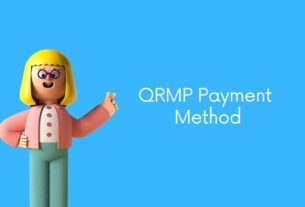“Any sufficiently advanced technology is equivalent to magic” – Sir Arthur C. Clark once said. While technology is both appreciated and criticized, nobody can argue that it has now become indispensable.
It is impossible to even dream of a tech-less life today. Technology has carved out its space in every arena of life. In this write-up, we aim to focus on one of the recent advancement of technology in tax – E-invoicing.
Although E-invoicing is much anew for India, it has been around for quite a few years in other parts of the world. About 65 countries worldwide have implemented E-invoicing with the common objective of checking invoice frauds and digitization of tax procedures.
There are primarily two types of E-invoicing followed globally viz. clearance method and post-audit method. Under the clearance method, the authorities approve of an invoice before the seller and buyer complete a transaction. On the contrary, under the post-audit method, the invoices are checked after the transaction happens.
Global Footprint Of E-invoicing
Various countries have adopted E-invoicing across the globe. There may be minor differences in the technology and processes used around the world. The key differences revolve around the data to be collected, requirements of digital signature, methods of uploading, etc.
However, in essence, the concept remains the same. Tabulated below are some key countries along with their dates of E-invoice implementation and the storage time for E-invoices.
| Sr. No. | Name Of Country | Year Of Implementation | Storage Period |
| 1 | Brazil | 2008 | 5 years |
| 2 | Norway | 2011 | 6 years |
| 3 | Denmark | 2005 | 5 years |
| 4 | France | 2017 (phased manner) | 10 years |
| 5 | Germany | 2018 | 10 years |
| 6 | Italy | 2019 | 10 years |
| 7 | UK | 2019 | 6 years |
| 8 | Ireland | 2019 | 6 years |
| 9 | China | 2017 (phased manner) | – |
| 10 | Singapore | B2G | 5 years |
EU has now adopted mandatory use of E-invoicing on B2G for Business to Government transactions. Although the EU has mandated B2G recently, B2B E-invoicing has also been rolled out in countries like Finland, Italy, and France.
Latin countries like Chile, Argentina, Mexico, Brazil, etc. have mature E-invoicing systems in place. E-invoicing in these countries goes a long way back when in 2003, Chile first switched to the electronic way of raising E-invoices.
In Asia, Singapore was the early adopter of E-invoicing for B2G transactions in 2008. Japan, China, and India are next, where the trend is catching up quickly. With GCC VAT round the corner, the trend is expected to soon reach there as well.
The E-invoicing mandates for the near future are in place for countries like Kuwait, Vietnam, Philippines, South Korea, etc. All these countries are set to adopt E-invoice between 2021 and 2023 in some or the other segment.
With E-invoicing becoming more and more popular in various countries, it is expected that the countries where the phenomenon has not caught up yet, would soon try and become a part of the bandwagon. This is because eventually, E-invoicing shall affect international trade as well. The Governments may gradually move to implement E-invoicing to import/ export transactions also.
What is surprising is that organizations across the world are implementing E-invoicing even though the same is not mandatory under their jurisdictions. This is due to the fact that E-invoicing has many advantages; a few of them are listed below.
Benefits Of E-invoicing
- E-invoicing brings standardization to the table. Each business generates invoices from its ERP in different formats. E-invoicing standardizes all such invoices and makes it easy to compare different types of invoices.
- Real-time availability of invoices to governmental agencies to curb tax evasion and invoice frauds.
- E-invoicing shall allow interoperability between different software.
- Manual data entry errors can be reduced to a large extent.
- Ease in compliance can be experienced as E-invoicing results in the auto-population of tax returns.
E-invoicing The Indian Way
With multiple delays and glitches, India finally has begun its rendezvous with E-invoicing on 1 October 2020. Being at a very nascent stage, it is quite early to remark on the ups and downs of the system. However, the elite club of 500 crores plus turnover is getting accustomed to the technological disruption.
The Indian E-invoicing system involves uploading of invoice details on the Invoice Registration Portal (IRP). The IRP then generates an Invoice Recognition Number or IRN. IRN then becomes an identity of that particular invoice. A copy of the E-invoice is generated with a QR code and is sent back to the supplier.
The IRN and QR code generated on the IRP would be used for GST compliances such as GST returns, ITC reconciliations, and E-way bills. This grants real-time access to the Government of all invoices raised by a business and shall help to curb tax evasion in the long run. Since all invoices have to be validated, a complete overhaul of the ERP systems would be required for a seamless transition to E-invoicing. Therefore, a GSP becomes an essential link in the chain as they provide access to NIC/ IRP to the taxpayers.
Busting the Myths: There are a lot of myths about E-invoicing which needs to be resolved. We are capturing the top 5 myths here along with the reality below:
| Myths | Reality |
| Tax invoices are to be generated on IRP | Tax invoices will be generated on ERP/ accounting software |
| New software is required for E-invoicing | Existing software to be updated for implementing E-invoicing |
| E-invoicing is applicable to all taxpayers registered under GST | E-invoicing is currently applicable to taxpayers with turnover > 500 crores |
| E-Way Bill is no more required | E-Way Bill is not dispensed away with as yet |
Experience So Far & Expected Timelines
In the last couple of days, there have not been any major hiccups in the E-invoicing system. However, for ease of taxpayers, the CBIC has given 30 days grace period to India Inc. wherein invoices issued during October 2020 shall be accepted and no penalty would be levied on any non-compliance.
As per data available on public platforms, more than 69.5 lakhs IRNs were generated in the first week of the launch of E-invoicing, i.e. between 1 October and 7 October. Further, in the initial 7 days, the IRN generation grew by 163%.
The Government officials have also revealed their intention to replace E-way bill by E-invoicing gradually. It has also been proposed that returns shall be auto generated basis E-invoicing and would only require verification and acceptance.
Recently, the Government has also announced the dates for implementation of E-invoicing for other taxpayers:
- For taxpayers with turnover > 100 crores: 1 January 2021
- For all other taxpayers (B2B supplies): 1 April 2021
Conclusion
India has seen some key technology revolutions in the last couple of years. It is clear that the focus of the Government is to make technology a part of everyday life. Thus, the next steps for India Inc. would be to prepare for E-invoicing, if not already done so and to become agile to technology as the Government is likely to bring many such tax technology reforms in the near future.
This is also evident from the fact that the Government has taken measurable steps like Turant Customs, E-office, E-Way Bills to improve India’s ranking on the ‘Paying taxes’ index. Currently, we rank at 115th place with regards to the compliance complexity, which is certain to improve once E-invoicing is implemented in letter and spirit.
When the Government is spending considerable capital, time, and effort on tax technology, it slowly trickles down to the entire economy. Hence, India’s time to rise up to the world stage in terms of tax technology has begun.


